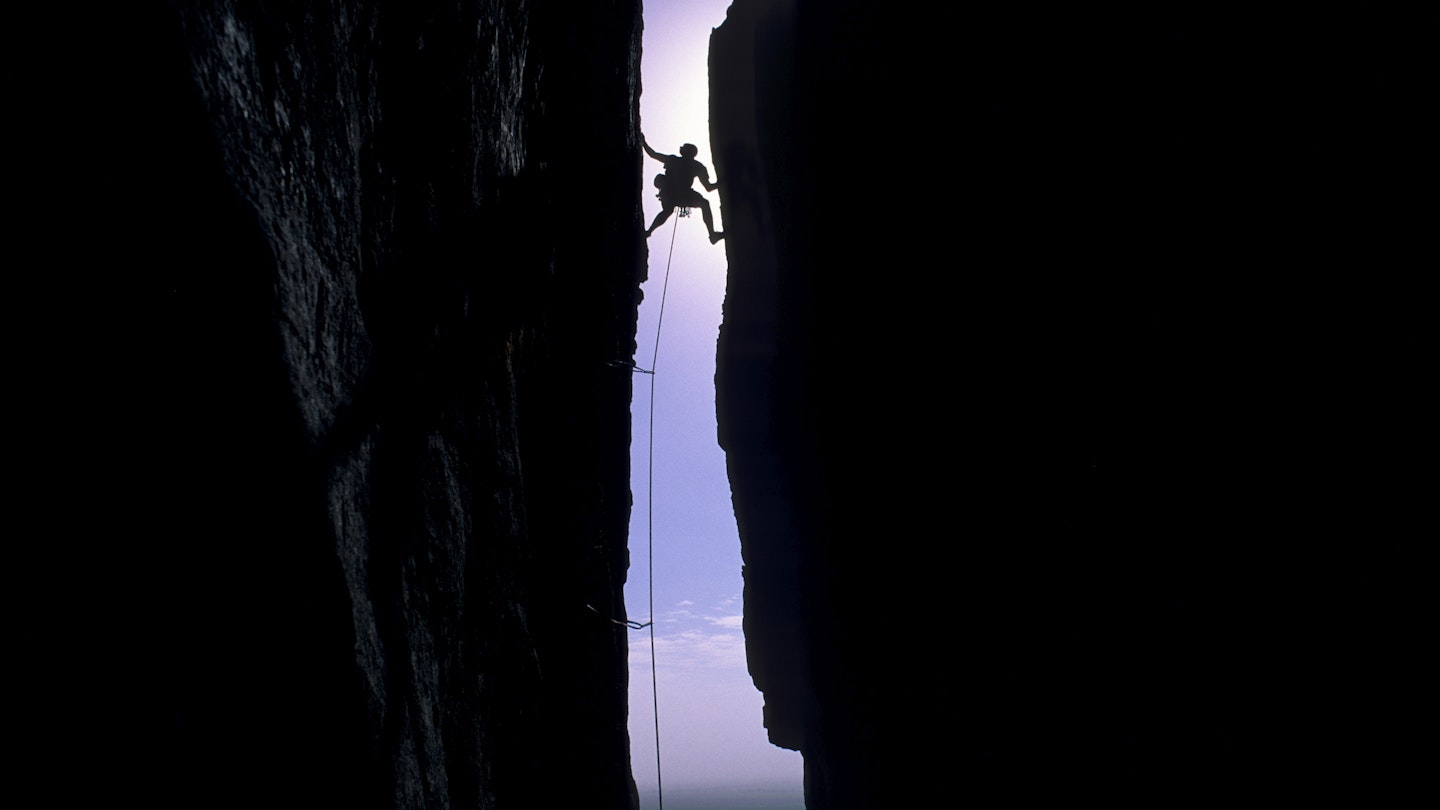Australia may be the world’s flattest continent; however, it is packed with enough vertical topography to occupy any climber for many lifetimes. The most famous locations are the Grampians and Mt Arapiles, but there is no shortage of other world-class crags to explore.
Sydneysiders luxuriate in their famous bay, but the city is bounded to the west by the towering bulk of the Blue Mountains and its paradise of cliff-lined valleys. In Tasmania, granite-like dolerite forms into endless cracks and, every so often, unique free-standing ‘poles’. Moreover, climbing Down Under is more than just about rock; it’s about the bush: giant gum trees, explosions of flowering wattle, mobs of kangaroos, and that rare-to-find quality, solitude.
Victoria
Four hours west of Melbourne, an anomaly appears. Rising from the wheat fields are what appear to be the ruined walls of a crumbling fortress, its ramparts crusted with moss and topped with a Telecom tower. Closer inspection reveals the walls are far from crumbling, as they are formed from perfect silica-rich sandstone. Amid the labyrinth of buttresses, pinnacles, and gullies roam climbers who spend their days climbing some of Mt Arapiles’ 3000-plus routes. In the 1980s, Arapiles put Australian climbing on the map. A ragtag collection of climbers lived full-time in tents and spent their days competing for new routes. Consequently, word spread, and in 1985, legendary German climber Wolfgang Güllich visited, climbing Arapiles’ most famous route, Punks in the Gym (32/5.14a) – the world’s hardest at the time. Although Arapiles is no longer at the cutting-edge, it remains a place of pilgrimage for climbers at all levels, from those coming to repeat Punks in the Gym to absolute beginners.

Forty-five minutes east of Arapiles, the Grampians rise from the flat Wimmera plain. Set among its rocky ridges and valleys is nearly endless bouldering, along with sport and trad climbing on perfect sandstone. Taipan Wall – a 70m-high tsunami of steep orange sandstone – is the crown jewel. Many climbers say it’s the best cliff in the world, and if one route were to epitomize Taipan’s perfection, it would be Serpentine (29/5.13b), two pitches of sublime climbing up the proudest part of the wall. If the best route on the world’s best wall isn’t the world’s best route, then what is? Furthermore, Taipan is just the beginning; the 167,219-hectare park holds hundreds of crags and thousands of boulders for climbers to explore. Best of all, on most days your only companions will be soaring wedge-tailed eagles and the odd wallaby.
New South Wales
An hour west of Sydney, the hazy mass of the Blue Mountains looms on the horizon. Known as ‘the Blueys’ among locals, this destination is a contender for Australia’s best sport climbing site. Renowned for its crimpy orange sandstone, the sheer volume of rock is astounding. Most climbers come for the sport routes; however, those seeking more adventure should abseil into the green depths of the mighty Grose Valley, exiting the 150m-high walls by climbing one of the hundreds of multipitch routes available.
South Australia
In the desert, 400 kilometers north of Adelaide, lie the Flinders Ranges. This ancient range holds one of Australia’s best and least visited crags, Moonarie, an orange sandstone escarpment that sits on the edge of Wilpena Pound, a natural amphitheater of mountains. The climbing here is exceptional, thanks to the red desert-polished sandstone. Moreover, the big cliffs yield long, demanding pitches that are rendered slightly more serious by the remoteness and solitude of your surroundings.

Tasmania
About an hour from Hobart lies the Tasman Peninsula, a rugged cape lined with massive dolerite cliffs. The peninsula features a series of unique, narrow dolerite ‘poles’. Most famous is the Totem Pole, a 60m-high, 4m-wide tower protruding from a narrow gap between the mainland and a larger monolith behind it, known as the Candlestick. The first climber to reach its summit, the legendary 1960s hardman, John Ewbank, described it as: “Take a matchstick, change it into dolerite. Multiply it 1600 times. Stand it upright in a heavy swell, then swim away before it topples over.” The route offers an adventure: after abseiling down to ocean level, climbers must swing across the wave-torn gap, then climb “the Tote” via two superb pitches. At the top, it’s not all over; consequently, getting off requires swinging 60m above the sea back to the mainland.





